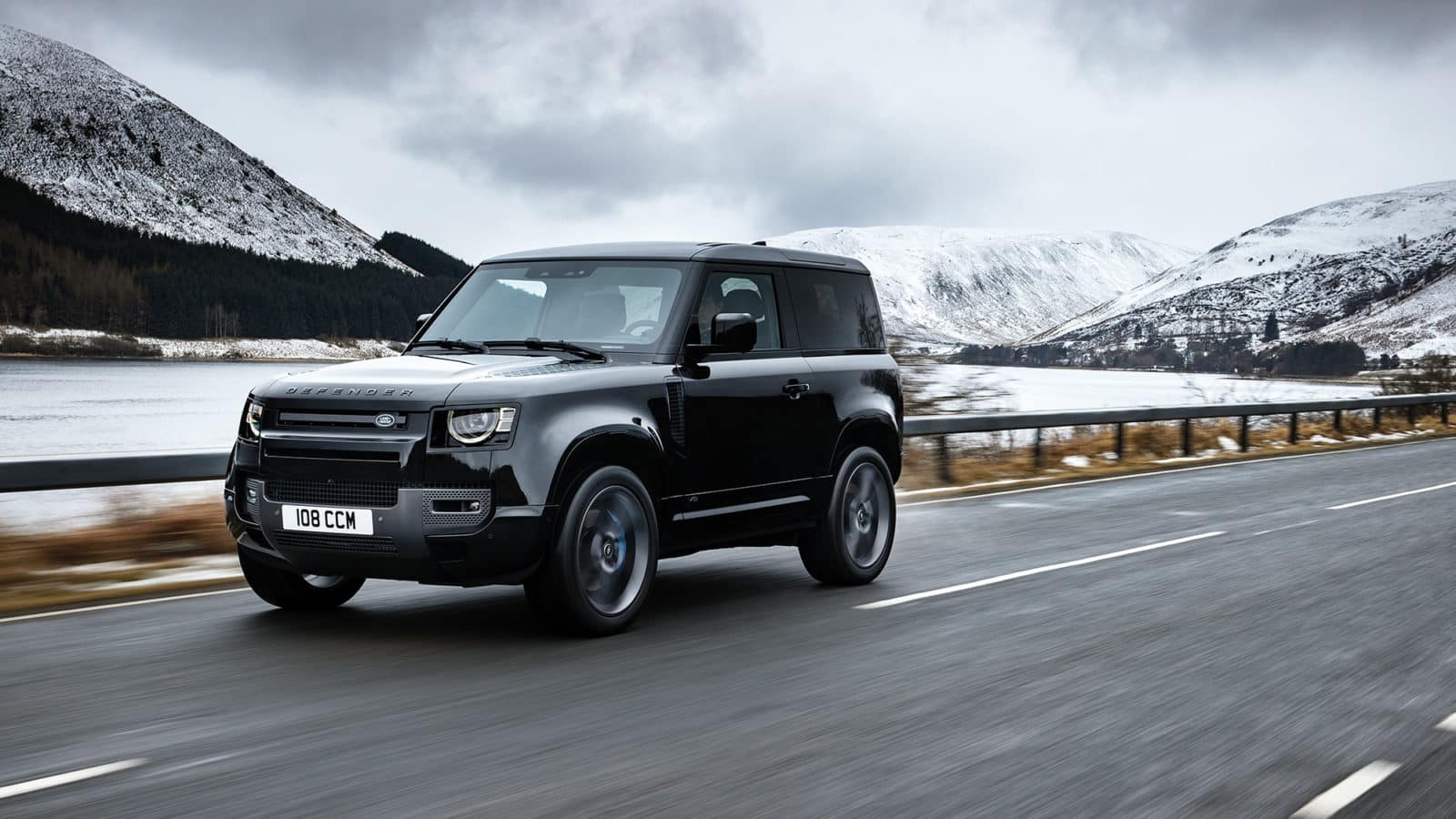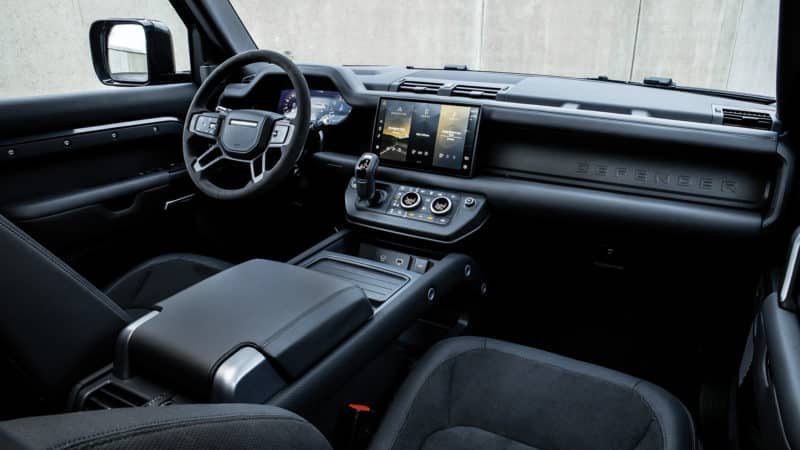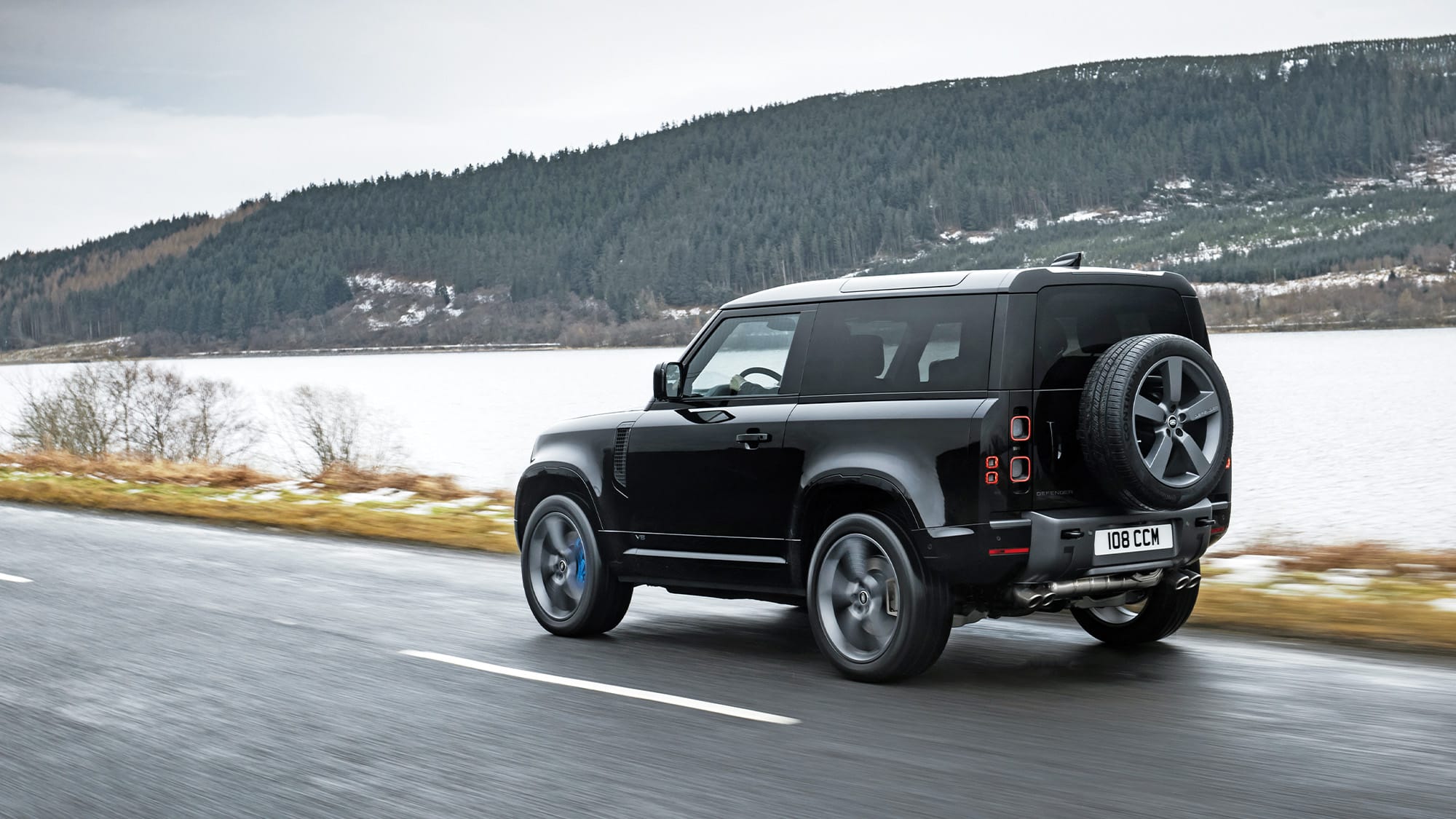2021 Land Rover Defender V8 review: Think outside the box
On our rapidly electrified highways, is this the right time for a 5-litre V8 Land Rover Defender? Andrew Frankel finds out

A Defender with a top speed of almost 150mph – but is there a crazier version on the way?
Don’t look at the Land Rover Defender as a standalone vehicle. It is in addition an image builder for Land Rover and a much needed one as well. For a while Range Rover has snapped up all the attention from the fashionista media. Since the demise of the original Defender five years ago now, poor old Land Rover has had to subsist on the thin gruel provided by the unremarkable Discovery Sport and visually charmless Discovery. The Defender’s job is to sprinkle stardust on them, and sprinkler-in-chief is the new V8 version.
For this is a car nobody needs. If your requirements are simply for a fast Defender could I commend to you the quite excellent plug-in hybrid version which will still break six seconds to 60mph but cost a fraction both to buy and run. It is a far better car.
This won’t trouble Defender V8 prospects at all for they don’t want the best Defender, they want the one that will make them feel best about themselves, and that is a different matter. In such affairs a 5-litre supercharged V8 will trump a 2-litre turbo hybrid four every day of the week, month and year.
The motor used is the ‘standard’ 5-litre V8 producing 518bhp, backed by 461lb ft of torque, which sounds a lot until you consider the rival, albeit far more expensive, Mercedes G-Wagen offers 585bhp and 626lb ft of torque despite having only 80% of the engine capacity.

The cabin is a sea of black leather and extra suede, along with a 10in display screen
What also needs factoring in before anyone gets too excited is that even in short-wheelbase form it weighs over 2½ tonnes, an enormous mass for a car built largely from aluminium.
What this means is that the Defender V8 fails to live up to the level of expectation that naturally builds up around it. What you’re hoping for is some maniacal Tonka toy, pinging you from place to place with outrageous speed and a thundering soundtrack. In fact, it does neither of these things.
The truth is, the Defender V8 just isn’t that quick. Think hot Golf and you’ll not be far off the money. The Porsche Cayenne Turbo that the same sort of money will buy is in a different world of performance, so if you just want to go fast, for goodness sake buy one of those instead. Worse, the Defender V8 doesn’t even sound that interesting. There’s a V8 thrum, rising to a distant rumble, but it’s all far too civilised to provide the aural theatre many, if not all, customers would hope for and have every right to expect from such a car.
“The strange thing is that the engine is in a supporting role”
All of which would add up to a sizeable disappoint if, somehow, the car didn’t exude charm and offer genuine pleasure. For which we can thank not its engine, but its chassis.
It’s extraordinary how well Land Rover’s suspension engineers have persuaded a mass so high and heavy to handle so well. Of course there’s stiffer suspension but the car comes on 22in rims as standard (or 20in with off-road tyres if preferred) and has a new and electronically controlled limited slip differential at the back. Torque vectoring where an inside wheel is braked to kill understeer is also included.
And it’s still not hugely fast cross country because grip is inevitably limited, but it is mightily composed and accurate, the steering is terrific and it all combines to provide a level of driver involvement and confidence you just don’t expect from this kind of car.
It is also still excellent off-road. I accept that approximately none of the people who will buy the car will try it in this environment, but it will still be important to them to know it can cope, which it does with majestic Land Rover style. I went clambering all over Eastnor Castle’s many off-road routes and discovered that, as usual, the limiting factor was the courage of the driver, not the ability of the car.
The strange thing with this Defender, especially to those who remember how Rover V8 motors of far less potency so transformed versions of the old Defender, is that the engine is cast in a supporting role. It is an enabler, the device that provides the energy the chassis requires to bring it alive and show you what it can do. So this was a car I liked, just not for any of the reasons I had originally expected.
Would I have one? Probably not. As previously stated, as a workhorse the plug-in Defender makes more sense on every level that might be important to you. And as a thing of fun for those who think spending upwards of £100k on a Defender is a reasonable thing to do? If I were one of them I’d be asking myself why JLR didn’t go the whole hog and put its most powerful V8 engine under the bonnet, for there is a 567bhp specification motor in its catalogue. I’d be asking also whether there is likely to be an SVR skunk works edition coming down the tracks not far from now.
I’d bet plenty that there is, and that the reason the current Defender V8 is not quite as rapid or rude as you might have expected is to create clean air into which such a car might fall. So while this might be the ultimate Defender for now, I don’t imagine it will be so forever. And as ever more restrictive legislation arrives, I expect the window for creating the nutty Defender V8 of our dreams is narrowing daily. In short, my guess is that that car is coming, and sooner than you might think.
2021 Land Rover Defender V8 statistics
Price £98,575
Engine 5-litre, 8 cylinders, supercharged
Power 518bhp at 6000rpm
Torque 461lb ft at 2500rpm
Weight 2546kg
Power to weight 203bhp per tonne
Transmission Eight-speed automatic, four-wheel drive
0-62mph 4.9sec
Top speed 149mph
Economy 19.3mpg
CO2 330g/km
Verdict Interesting to see what’s next…

